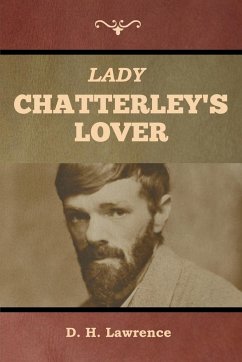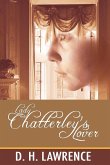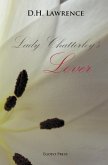Lady Chatterley's Lover is the last novel by English author D. H. Lawrence, which was first published privately in 1928, in Italy, and in 1929, in France. An unexpurgated edition was not published openly in the United Kingdom until 1960, when it was the subject of a watershed obscenity trial against the publisher Penguin Books, which won the case and quickly sold three million copies. The book was also banned for obscenity in the United States, Canada, Australia, India and Japan. The book soon became notorious for its story of the physical (and emotional) relationship between a working-class man and an upper-class woman, its explicit descriptions of sex and its use of then-unprintable four-letter words. The story is said to have originated from certain events in Lawrence's own unhappy domestic life, and he took inspiration for the settings of the book from Nottinghamshire, where he grew up. According to some critics, the fling of Lady Ottoline Morrell with "Tiger", a young stonemason who came to carve plinths for her garden statues, also influenced the story. Lawrence, who had once considered calling the novel John Thomas and Lady Jane in reference to the male and the female sex organs, made significant alterations to the text and story in the process of its composition. Lawrence allegedly read the manuscript of Maurice by E. M. Forster, which was published posthumously in 1971. That novel, although it is about a homosexual couple, also involves a gamekeeper becoming the lover of a member of the upper classes and influenced Lady Chatterley's Lover. In the United States, the full publication of Lady Chatterley's Lover was a significant event in the "sexual revolution". The book was then a topic of widespread discussion and a byword of sorts. In 1965, Tom Lehrer recorded a satirical song, "Smut", in which the speaker in the song lyrics cheerfully acknowledges his enjoyment of such material; "Who needs a hobby like tennis or philately?/I've got a hobby: rereading Lady Chatterley". The British poet Philip Larkin's poem "Annus Mirabilis" begins with a reference to the trial: Sexual intercourse began In nineteen sixty-three (which was rather late for me) - Between the end of the "Chatterley" ban And the Beatles' first LP. In 1976, the story was parodied by Morecambe and Wise on their BBC sketch show. A "play what Ernie wrote", The Handyman and M'Lady, was obviously based on it, with Michele Dotrice as the Lady Chatterley figure. Introducing it, Ernie explained that his play "concerns a rich, titled young lady who is deprived of love, caused by her husband falling into a combine harvester, which unfortunately makes him impudent". (wikipedia.org)





